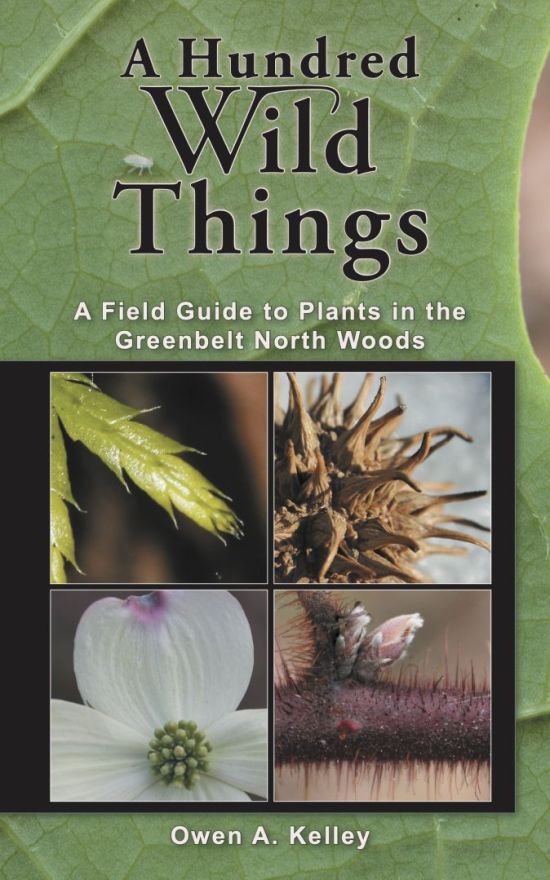
A Hundred Wild Things: A Field Guide to Plants in the Greenbelt North Woods
Anyone can learn to identify trees, wildflowers, lichens, and other living things in the forest known as the “Great North Woods” of Greenbelt, Maryland. With more than 200 photographs, this field guide can be your companion as you hike the forest, helping you to distinguish moss from clubmoss and black gum from black cherry. The ecological role of individual species is described, as is their history on the site. This book is full of wild shapes and colors, the forest in different seasons, weather, and light.
The North Woods, like the rest of Old Greenbelt, owes its existence to government efforts to reduce suffering during the Great Depression. Roosevelt’s New Deal conceived of Greenbelt to demonstrate of the benefits of town planning. It was a whole town engineered to be a healthy place to live. Cooperative ownership was central to the experiment, as was a permanent belt of forest, field, and other green space.
Now, the Greenbelt North Woods is caught in a tug of war. Natural processes work to keep the forest healthy and enable the century-old forest to continue maturing. Working against them are the pressures inherent to an inner suburb of Washington, DC, such as pollution, plants escaping gardens, a deer population ready to explode, and threats of new transportation projects. For now, the North Woods remains a haven for rare orchids, expanses of delicate clubmoss, and a few old trees whose trunks are more than three feet in diameter. May this book be your passport to this wild place.






